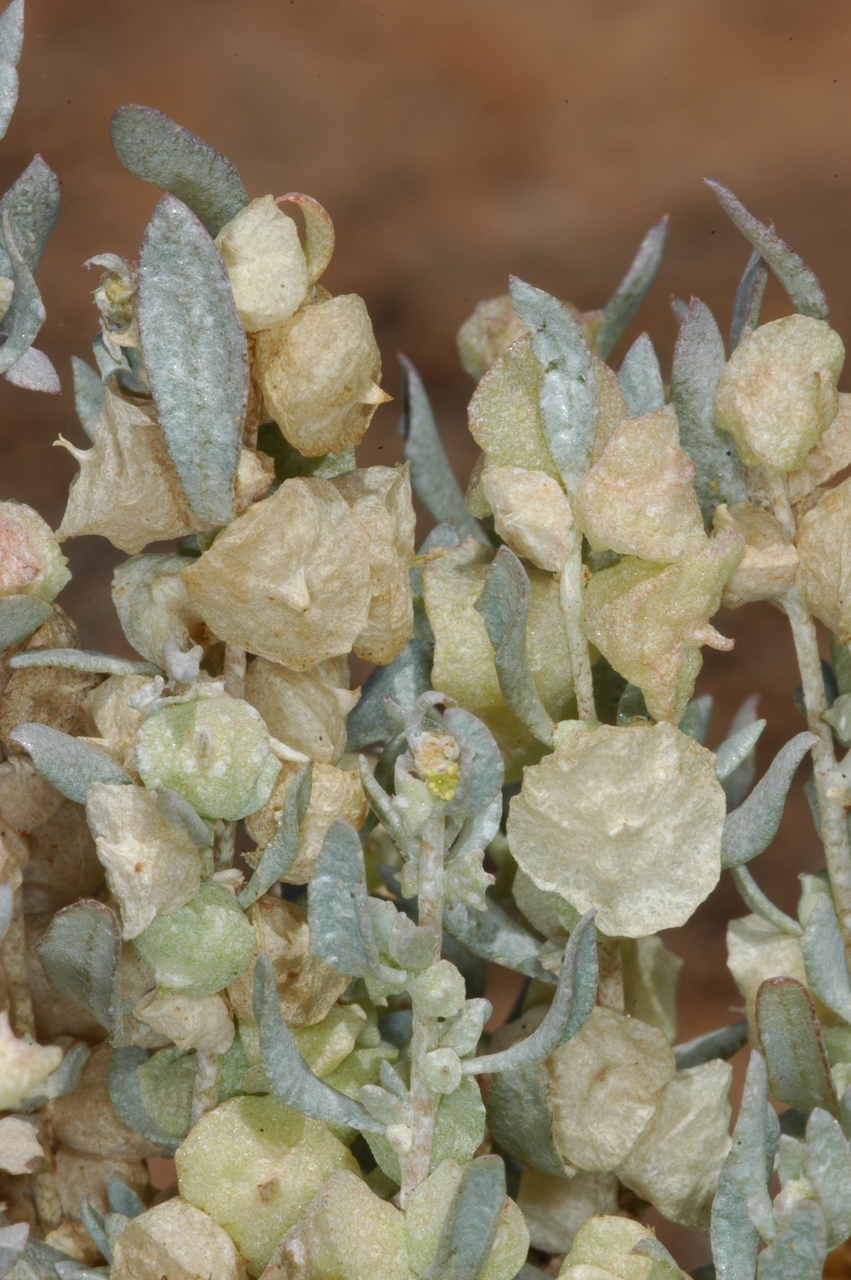

Baldoo
Atriplex lindleyi
Erect or spreading annual to 40 cm high. Leaves obovate to narrow-elliptic to 4 cm long, rather thick and soft, often with margins with angular teeth. Flowers at the junctions of leaf and stem, solitary or in clusters. Inflated and fused fruiting bracteoles are fibrous and spongy.
| Details | |
|---|---|
| Flora Type | Chenopods |
| Other Common Names | Eastern Flat-top Saltbush |
| Distinctive Features | Leaves powdery grey from hairs on leaves. Spongy, inflated bracteole 10-15 mm long and as wide. |
| Biology | Male and female structures separate on same plant. An invader of degraded and/or salted areas on heavier soils. Widespread and abundant at times in drier areas. Often occurs in often in depressions or low-lying areas. Has 5 subspecies that vary mostly in shape and size of fruiting body. |
| Native Status | Native |
| Flowering Time | Fruits mainly Mar-Aug |